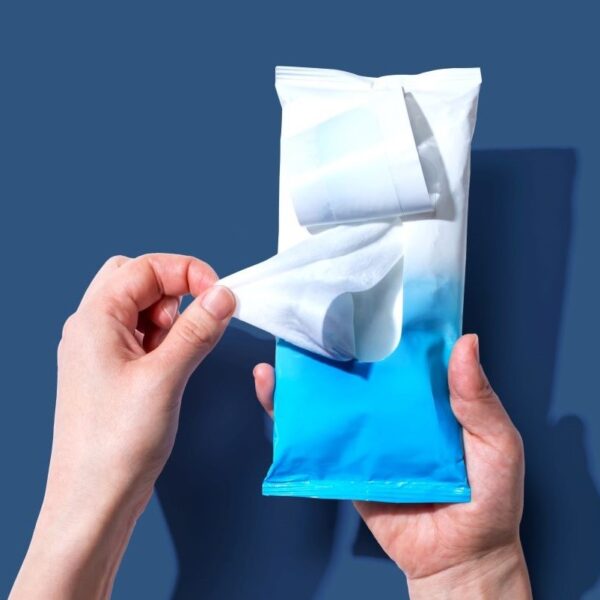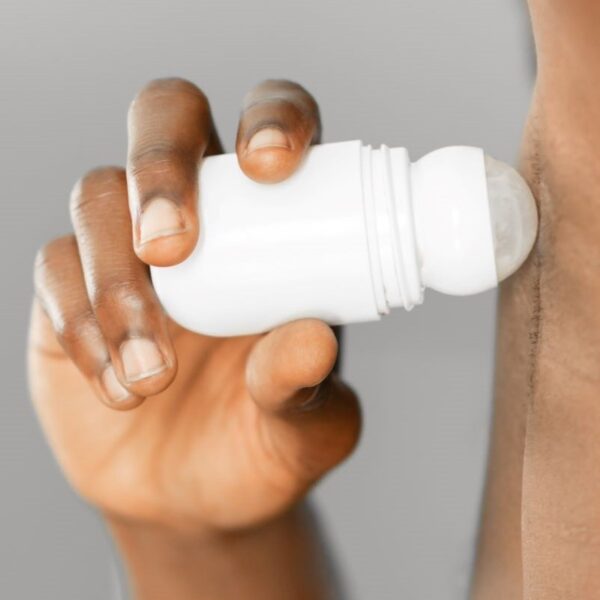Calcium carbonate is a natural mineral found in rocks such as calcite, vaterite, and aragonite. It is also found in marine organism shells, pearls, and eggshells. In its pure form, it appears as a white, odorless powder. It is a versatile compound with various applications in the personal care industry.
What is Calcium Carbonate?
The chemical formula of calcium carbonate is CaCO3, which is comprised of [Ca]2+ and [CO3]2- ions. The carbonate ion has a triangular planar structure. The molecular structure of calcium carbonate is given below.
Calcium Carbonate Chemical Structure. Source: Wikipedia
How is Calcium Carbonate Produced?
Calcium carbonate is an abundant mineral in the Earth’s crust and can be found in various forms, such as limestone, marble, calcite, and aragonite. It is commonly extracted from mining or quarrying marble stones for mass production. Additionally, calcium carbonate occurs naturally in the shells of shellfish, snails, and eggshells. Approximately 95% of dry eggshells and seashells consist of calcium carbonate.
Calcium carbonate can also be synthetically produced. One method combines calcium oxide (quicklime) with carbon dioxide to form calcium carbonate. This can be done through a chemical reaction where calcium oxide reacts with carbon dioxide in the presence of water to produce calcium carbonate. Another method involves using calcium chloride and sodium carbonate to precipitate calcium carbonate from the solution. These methods allow calcium carbonate creation in a controlled environment, ensuring its purity and quality for various industrial and commercial applications.
Applications in Personal Care
| Function | Applications |
| Abrasive | Calcium carbonate is used as an abrasive in personal care products to help remove dirt, oil, and dead skin cells from the skin’s surface. |
| Buffering Agent | Calcium carbonate acts as a buffer in formulations to help maintain the pH level of the product. |
| Bulking Agent | Calcium carbonate is a bulking agent to increase a product’s volume and density while providing a smooth texture. |
| Opacifying | Calcium carbonate is an opacifying agent that adds opacity to products such as lotions and creams, giving them a more luxurious appearance. |
| Filler | Calcium carbonate is used as filler in multiple cosmetic applications. |
| Oral Care | In oral care products, calcium carbonate, with its mild abrasive properties, helps strengthen tooth enamel, prevent cavities, and freshen breath. |
Product Examples
| Type | Examples |
| Skincare | Face scrubs, body wash, body powders |
| Oral Care | Toothpaste |
| Hair Care | Shampoos, conditioners |
| Cosmetics | Face powders, foundations |
| Baby Care | Diaper cream, diaper powders |
| Men’s Grooming | Shaving cream |
Properties of Calcium Carbonate
| Physical Form | Solid |
| Color | White |
| Odor | Odorless |
| Shelf Life | ~60 months (when stored at prescribed conditions) |
| Storage Temperature & Conditions | Store at +5°C to +30°C |
| Appearance | Fine white powder |
| Density | 2.711 g/cm3 |
| Molar Mass | 100.0869 g/mol |
| Refractive Index | 1.6583 |
| Melting Point | 825°C |
| pKa | 9.0 |
| Solubility | 15 mg/L at 25°C in water |
Typical Formulations
Toothpaste
Here is an example of a toothpaste formulation table along with the % weight of ingredients:
| Ingredient | % Composition |
| Sorbitol (70wt% aqueous solution) | 21 |
| Guar gum | 0.1 |
| Sodium saccharin | 0.27 |
| Sodium monofluorophosphate | 1.1 |
| CMC | 1 |
| Sodium bicarbonate | 0.1 |
| Sodium carbonate | 0.4 |
| Silica | 2 |
| Calcium carbonate | 42 |
| Titanium dioxide | 0.1 |
| Sodium la | 2 |
| Methylparaben | 0.1 |
| Propylparaben | 0.02 |
| Deionized water | 28.8033 |
| Flavor | 1 |
| CI Pigment Green 7 | 0.0067 |
Source: Google Patents
Pressed Face Powder
Here is an example of a face powder formulation table along with the % weight of ingredients:
| Ingredient | % Composition |
| Ground rice hulls | 74.875 |
| Titanium dioxide | 3.75 |
| Zinc stearate | 7.50 |
| Zinc oxide | 0.2 |
| Calcium carbonate | 7.5 |
| 20% Iron oxide in talc | 0.025 |
| 20% D&C Red in talc | 0.25 |
| 20% D&C Orange in talc | 0.15 |
Source: Google Patents
Calcium Carbonate Formulation Considerations
| Physical Forms | Powder or crystals. Calcium carbonate crystallizes in three anhydrous polymorphs as follows: – Calcite: White hexagonal crystals – Aragonite: White orthorhombic crystals – Vaterite: Colorless hexagonal crystals. |
| Stability | – Oxidation: Stable – Heat: Decomposes around ~750 °C (Stability Calcite > Aragonite > Vaterite) – pH: Highly reactive with strong acids |
| Sensory Attributes | Odorless with a slightly chalky taste |
| Dosage | 0.5-2% (varies as per product and formulation) |
| Interaction with Other Components | Incompatible with strong oxidizers and strong acids. May engage in violent explosive reactions with some acids due to higher reactivity. |
Effect on Properties of Product Applications
| Property | Effect |
| Opacity | Calcium carbonate can provide opacity to cosmetics formulations. According to a study, it can help attain a 45% contrast ratio. It can be a safe alternative to controversial whitening agents used in solid cosmetics. Its high purity, consistent particle size, and morphology make it the opacity agent of choice. |
| Texture | Calcium carbonate can control sheen to a certain extent by absorbing/adsorbing sebum, providing a matte gloss. It acts as a mild abrasive agent. It also improves the feel of the product by increasing its smoothness and modifying the texture to provide a silky feel. |
| Consistency | Calcium carbonate is a thickener that produces viscous dispersions and imparts body, improves consistency, or stabilizes emulsions. |
| Color | Calcium carbonate is white in color and can be used as a whitening agent in cosmetic formulations. |
Safety and Regulatory Considerations
| FDA Information | Calcium carbonate is generally recognized as safe (GRAS) by the US FDA. It is approved as an active ingredient in over-the-counter (OTC) products. Calcium carbonate falls under the category of color additives and is exempt from batch certification. It is important to note that color additives listed for use in drugs or cosmetics are not allowed in products intended for the eye area, injected products, or surgical sutures unless stated explicitly in the regulation for the color additive. |
| EU Information | – Calcium carbonate is allowed to be used as a colorant in cosmetics products. – Approved to be used as a food additive as E170 with a specific maximum level of quantum satis. |
Safety & Toxicity of Calcium Carbonate
The safety and toxicity of calcium carbonate in cosmetic products have been extensively evaluated. Calcium carbonate is considered safe for use in cosmetics. Studies have shown that calcium carbonate is non-toxic and safe for cosmetics when formulated as non-irritating. The Cosmetic Ingredient Review (CIR) Expert Panel concludes that it is safe for use in cosmetics at present practices of use and concentration.
Identification Numbers
| Chemical Name | Calcium carbonate |
| CAS Number | 471-34-1 |
| EC Number | 207-439-9 |
Acceptable Limits or Maximum Usage
The usage of calcium carbonate in cosmetic products varies depending on the specific product type. In eye area cosmetics, calcium carbonate can be used at concentrations up to 35%, while in dentifrices (toothpaste), the maximum allowable concentration is up to 10%.
Fun Facts About Calcium Carbonate
- While calcium carbonate is a naturally occurring substance, mining and processing can have environmental impacts, including habitat disruption and carbon emissions. For this reason, some companies are exploring sustainable sourcing and production methods to mitigate these effects.
- In toothpaste, calcium carbonate is an abrasive agent that helps remove plaque and surface stains from teeth. It’s an effective alternative to more abrasive compounds like silica, which can be harsh on enamel.







